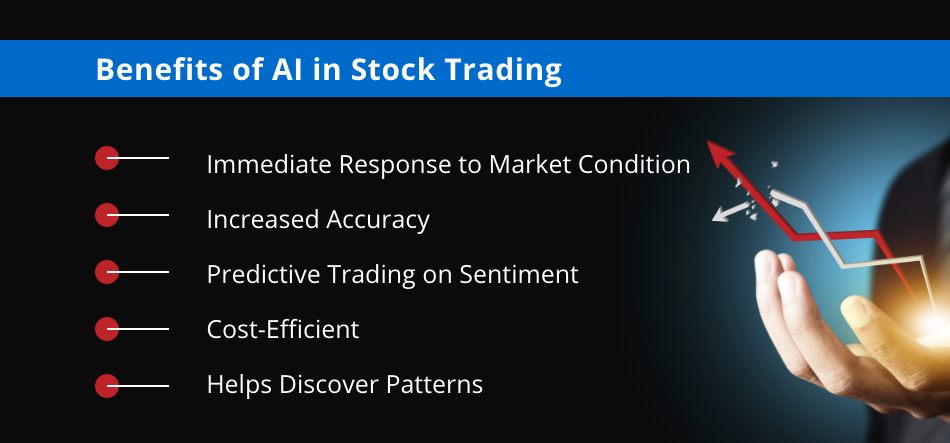Security and privacy are essential when using AI platform for stock prediction and analysis, as they often handle sensitive financial data as well as personal data. Data breaches or mishandling could lead to financial and reputational losses. Here are the top ten tips to help you evaluate the privacy and security capabilities of these platforms.
1. Evaluation of Data encryption
Transmitting data encrypted Check that the platform is using SSL or other secure protocols (e.g. TLS/SSL) for encryption of data transmitted between your devices and their servers.
Transporting encrypted data Verify that the sensitive data being stored on a server of the platform has been secured with strong encryption standards, like AES-256.
Verify if the platform supports end-to-end encryption of sensitive data or communications.
2. Review the authenticity methods
Double-factor authentication (copyright). Make sure your platform supports copyright. This will add another layer of security.
Biometric authentication: Find out whether the app supports biometric login methods (e.g. fingerprint, facial recognition) for mobile apps.
Password policy: Verify whether the platform has strict policies on passwords (e.g. minimum length and complexity requirements).
3. Verify Compliance
Financial regulations: Make sure you are in that you are in compliance with the applicable financial regulations (e.g. SEC FINRA MiFID II).
Data protection laws. Make sure you are in compliance with data privacy laws in your region (e.g. CCPA, GDPR) If applicable.
Audit certifications: Check whether the platform has passed security audits by a third party or has certifications (e.g., SOC 2, ISO 27001).
4. Review the Data Access Controls
Role Based Access: Ensure that the application uses role-based-access controls (RBAC) to restrict data-access to authorized individuals.
Permission levels: Verify that you are able to give different permissions to members or members.
Monitoring of activity. Verify whether the platform is monitoring suspicious activity of users and keeps track of it.
5. Evaluate the Management of Vulnerability
Regular updates: Ensure that the platform updates its software regularly in order to patch any vulnerabilities.
Penetration Testing: Check if the platform is put through penetration testing which helps identify and fix security weaknesses.
Bug bounty programmes: Determine if your platform has a program that rewards external security experts for reporting security issues.
6. Evaluate Data Privacy Policies
Transparency: Go through the privacy policies on the platform to know how your personal information is used, gathered and shared.
Data minimization is the process of ensuring that only data necessary for operation are gathered by a platform.
Third-party sharing: Check whether your platform shares data with third parties, and if it does then what are the conditions.
7. Verify Secure API Use
API security: Ensure the API of the platform API utilizes secured authentication methods (e.g., OAuth, API keys) and also encrypts data exchanges.
Rate-limiting: Verify whether the API has a rate limit to prevent abuse and brute-force attacks.
Access logs: Check whether the platform is recording API access and usage for auditing and monitoring.
8. Review Incident Response and Recovery
Incident response plan - Ensure that the platform is outfitted with a strategy to deal with data breaches and other security incidents.
Check the platform's notification policies to determine if the platform informs its users in a timely manner in the event of an incident of security.
Data backups: Ensure that the platform regularly backups its data and has a disaster recovery plan.
9. Check out the security measures for physical security
Data center security - Ensure that the platform's server is hosted in secure data centres with physical security (e.g. surveillance and access control).
Redundancy - Make sure that the platform is armed with redundant systems in order to ensure that data is available when hardware fails.
Geographic distribution: Determine if data is distributed over multiple geographical locations to increase the resilience.
10. Test User Privacy Controls
Data deletion: Make sure the platform allows you to permanently delete your personal data once you cease using the service.
Privacy settings: Make sure to check if the platform provides privacy settings to control the type of data public or shared.
Check to see if anonymization is applied to data that's used in machine learning or analytics.
Bonus Tips:
Reputation and reviews from users Review reviews and feedback from customers to gauge the platform's track of security and privacy.
Trial period - Use the trial or demo version of the platform to test its security features as well as privacy controls.
Customer support: Make sure that the platform offers robust support regarding security issues or concerns.
Follow these tips to evaluate the security and privacy level of AI platforms for stock prediction and analysis. So, your data and financial details are protected. A secure platform safeguards your assets and builds confidence in its service. Take a look at the top rated ai stock trading bot free for website info including chatgpt copyright, ai chart analysis, ai stock trading, market ai, investment ai, market ai, ai investment platform, ai investing, best ai trading software, investment ai and more.

Top 10 Tips On How To Assess The Updating And Maintenance Of Ai Stock Analysing Trading Platforms
Examining the maintenance and updates of AI-powered stock prediction and trading platforms is crucial to ensure that they are secure, efficient and in line with changing market conditions. Here are the top 10 suggestions to analyze their update and maintenance practices:
1. Updates occur frequently
Verify the frequency of updates on your platform (e.g. weekly, monthly or quarterly).
The reason: Regular updates are evidence of a growing business and an ability to adapt to changes in the market.
2. Transparency is the key to the Release Notes
Tip: Review the platform's release notes to find out what modifications or enhancements are being made.
Transparent release notes demonstrate the platform’s commitment to continuous advancements.
3. AI Model Retraining Schedule
Tip - Ask how often AI models are retrained on new data.
Why: As markets change models must change in order to stay accurate and relevant.
4. Fixes for bugs and issue resolution
Tip: Check how quickly the platform is able to resolve bugs and technical issues.
Reasons: Fast fix for bugs helps ensure the system's stability and function.
5. Updates on security
Tip: Check if the platform updates its security protocols on a regular basis to protect data of traders and users.
Why: Cybersecurity in financial platforms is vital to guard against breaches and fraud.
6. New Features Integration
Tips: Check whether there are any new features that are being introduced by the platform (e.g. advanced analytics, data sources, etc.) in response to user feedback or market trends.
The reason: The feature updates demonstrate innovation and responsiveness to users' needs.
7. Backward Compatibility
Tip: Ensure the updates you install do NOT require a major reconfiguration or interfere with the functionality of your current system.
Why: Backwards compatibility provides users with a smooth experience during transitions.
8. User Communication during Maintenance
Tip: Evaluate the way in which your platform announces scheduled maintenance or downtime to users.
Why: A clear communication will minimize disruptions and increase confidence.
9. Performance Monitoring and Optimisation
TIP: Ensure that the platform continuously monitors the performance metrics like accuracy or latency, and also improves their platforms.
What's the reason? Continuous optimization ensures the platform remains effective and expandable.
10. Conformity to Regulation Changes
Tips: Check if the platform updates its features and policies to be in compliance with the latest rules on financial regulation or data privacy laws.
Why is it important to adhere to regulations to reduce legal risks, and maintain the trust of users.
Bonus Tip - User Feedback Integration
Examine whether the platform integrates feedback from users in its update and maintenance processes. This shows that the platform is focusing on customer feedback to improvement.
If you evaluate these elements it is possible to ensure that the AI stock prediction and trading platform you choose to use is well-maintained current, updated, and able to adapt to the changing dynamics of markets. Take a look at the most popular ai stock prediction for blog tips including ai software stocks, ai stock analysis, can ai predict stock market, stock trading ai, best ai trading platform, ai stock analysis, best ai stocks to buy now, best ai stock prediction, how to use ai for copyright trading, invest ai and more.

 Jaleel White Then & Now!
Jaleel White Then & Now! Jason J. Richter Then & Now!
Jason J. Richter Then & Now! Destiny’s Child Then & Now!
Destiny’s Child Then & Now! Soleil Moon Frye Then & Now!
Soleil Moon Frye Then & Now! Mary Beth McDonough Then & Now!
Mary Beth McDonough Then & Now!